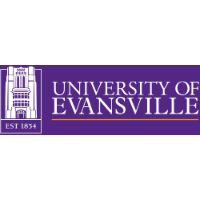What do they do?
Evaluate and treat musculoskeletal injuries or illnesses. Provide preventive, therapeutic, emergency, and rehabilitative care.
Also known as:
Athletic Instructor, Athletic Lecturer, Athletic Trainer, Certified Athletic Trainer, Personal Trainer, Resident Athletic Trainer, Women's Athletic Trainer
-
12.4%
Change
Ranks #35 in job growth rate100Job Openings
Ranks #13 in net job growth
-
University of Puerto Rico at Ponce
Ponce, PR
-
Florida State University
Tallahassee, FL
-
University of South Carolina-Columbia
Columbia, SC
-
Springfield College
Springfield, MA
-
East Stroudsburg University of Pennsylvania
East Stroudsburg, PA
Looking for colleges that offer a specific major? Use the College Match Tool to find your best-matched schools and discover your estimated Net Price!
- Doctorate or Professional Degree (4%)
- Master's degree (36%)
- Bachelor's degree (31%)
- Associate's degree (9%)
- Some college, no degree (12%)
- High school diploma equivalent (6%)
- Less than high school diploma (<1%)
People in this career often have these skills:
- Active Listening - Giving full attention to what other people are saying, taking time to understand the points being made, asking questions as appropriate, and not interrupting at inappropriate times.
- Speaking - Talking to others to convey information effectively.
- Critical Thinking - Using logic and reasoning to identify the strengths and weaknesses of alternative solutions, conclusions, or approaches to problems.
- Monitoring - Monitoring/Assessing performance of yourself, other individuals, or organizations to make improvements or take corrective action.
- Judgment and Decision Making - Considering the relative costs and benefits of potential actions to choose the most appropriate one.
- Reading Comprehension - Understanding written sentences and paragraphs in work-related documents.
- Active Learning - Understanding the implications of new information for both current and future problem-solving and decision-making.
- Social Perceptiveness - Being aware of others' reactions and understanding why they react as they do.
- Instructing - Teaching others how to do something.
- Service Orientation - Actively looking for ways to help people.
- Writing - Communicating effectively in writing as appropriate for the needs of the audience.
People in this career often know a lot about:
- Medicine and Dentistry - Knowledge of the information and techniques needed to diagnose and treat human injuries, diseases, and deformities. This includes symptoms, treatment alternatives, drug properties and interactions, and preventive health-care measures.
- Customer and Personal Service - Knowledge of principles and processes for providing customer and personal services. This includes customer needs assessment, meeting quality standards for services, and evaluation of customer satisfaction.
- Psychology - Knowledge of human behavior and performance; individual differences in ability, personality, and interests; learning and motivation; psychological research methods; and the assessment and treatment of behavioral and affective disorders.
- Therapy and Counseling - Knowledge of principles, methods, and procedures for diagnosis, treatment, and rehabilitation of physical and mental dysfunctions, and for career counseling and guidance.
- English Language - Knowledge of the structure and content of the English language including the meaning and spelling of words, rules of composition, and grammar.
- Education and Training - Knowledge of principles and methods for curriculum and training design, teaching and instruction for individuals and groups, and the measurement of training effects.
People in this career often have talent in:
- Problem Sensitivity - The ability to tell when something is wrong or is likely to go wrong. It does not involve solving the problem, only recognizing that there is a problem.
- Oral Expression - The ability to communicate information and ideas in speaking so others will understand.
- Written Comprehension - The ability to read and understand information and ideas presented in writing.
- Speech Recognition - The ability to identify and understand the speech of another person.
- Speech Clarity - The ability to speak clearly so others can understand you.
- Written Expression - The ability to communicate information and ideas in writing so others will understand.
- Deductive Reasoning - The ability to apply general rules to specific problems to produce answers that make sense.
- Inductive Reasoning - The ability to combine pieces of information to form general rules or conclusions (includes finding a relationship among seemingly unrelated events).
- Information Ordering - The ability to arrange things or actions in a certain order or pattern according to a specific rule or set of rules (e.g., patterns of numbers, letters, words, pictures, mathematical operations).
- Oral Comprehension - The ability to listen to and understand information and ideas presented through spoken words and sentences.
- Near Vision - The ability to see details at close range (within a few feet of the observer).
People in this career often do these activities:
- Analyze patient data to determine patient needs or treatment goals.
- Evaluate patient outcomes to determine effectiveness of treatments.
- Inform medical professionals regarding patient conditions and care.
- Operate diagnostic or therapeutic medical instruments or equipment.
- Treat patients using physical therapy techniques.
- Evaluate patient functioning, capabilities, or health.
- Prepare reports summarizing patient diagnostic or care activities.
- Maintain medical facility records.
- Perform clerical work in medical settings.
- Clean facilities or equipment.
- Maintain clean work areas.
- Advise athletes, coaches, or trainers on exercise regimens, nutrition, or equipment use.
- Apply bandages, dressings, or splints.
- Develop exercise or conditioning programs.
- Collaborate with healthcare professionals to plan or provide treatment.
- Inspect work environments to ensure safety.
- Process medical billing information.
- Consult with others regarding safe or healthy equipment or facilities.
- Treat patients using alternative medical procedures.
- Train medical providers.
- Conduct research to increase knowledge about medical issues.
- Maintain medical equipment or instruments.
- Maintain inventory of medical supplies or equipment.
This page includes data from:

 Occupation statistics: USDOL U.S. Bureau of Labor Statistics Occupational Employment Statistics
Occupation statistics: USDOL U.S. Bureau of Labor Statistics Occupational Employment Statistics









